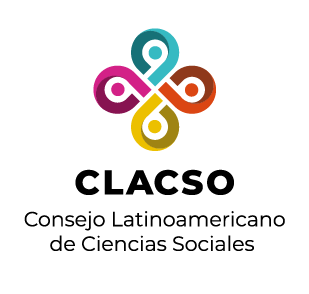Red de Bibliotecas Virtuales de Ciencias Sociales en
América Latina y el Caribe

Por favor, use este identificador para citar o enlazar este ítem:
https://biblioteca-repositorio.clacso.edu.ar/handle/CLACSO/61891Registro completo de metadatos
| Campo DC | Valor | Lengua/Idioma |
|---|---|---|
| dc.creator | Olivares Koyck, Cecilia Ximena | - |
| dc.date | 2020-10-13 | - |
| dc.date.accessioned | 2022-03-18T16:20:57Z | - |
| dc.date.available | 2022-03-18T16:20:57Z | - |
| dc.identifier | https://periodicos.fclar.unesp.br/letras/article/view/13068 | - |
| dc.identifier.uri | http://biblioteca-repositorio.clacso.edu.ar/handle/CLACSO/61891 | - |
| dc.description | Estrellas muertas (BISAMA, 2010) addresses the voice of a tertiary witness of the gestation of an event of violence in Chile, towards the end of the nineties. From a collection of images linked in a narrative of horror, the testimonial story is crumbling the loose ends that precede the scene of a crime, where a series of unconnected situations are revealed; the victimization product of detention and torture in the Chilean dictatorship, the exploration of the memories of youth and the intervention of the landscape of Valparaíso in ashes product of the flames of a fire in Laguna Verde; materializing scenes woven in violence and the constant siege of an uncontrollable memory. For this, an analysis is made of the elements that weave this story from the perspective of the concept of memory as a narratological continent of violence and its possible keys to reading. | en-US |
| dc.description | Estrellas muertas (BISAMA, 2010) aborda la voz de una testigo terciaria de la gestación de un acontecimiento de violencia ocurrido en Chile, hacia finales de los noventa. A partir de una recolección de imágenes enlazadas en una narrativa del horror, el relato testimonial va desmenuzando los cabos sueltos que anteceden el escenario de un crimen, en donde se develan una serie de situaciones inconexas; la victimización producto de detención y tortura en la dictadura chilena, la exploración de los recuerdos de juventud y la intevención del paisaje de Valparaíso en cenizas producto de las llamas de un incendio en Laguna Verde; materializando escenas tejidas en la violencia y el asedio constante de una memoria incontrolable. En este contexto, en el presente artículo se efectúa un análisis de los elementos que tejen este relato desde la perspectiva del concepto de la memoria como continente narratológico de la violencia y sus posibles claves de lectura. | es-ES |
| dc.format | application/pdf | - |
| dc.language | spa | - |
| dc.publisher | Revista de Letras | en-US |
| dc.publisher | Revista de Letras | pt-BR |
| dc.relation | https://periodicos.fclar.unesp.br/letras/article/view/13068/9772 | - |
| dc.rights | Copyright (c) 2020 Revista de Letras | pt-BR |
| dc.source | Revista de Letras; Vol. 59 No. 2 (2019): Dossiê: O pensamento japonês | en-US |
| dc.source | Revista de Letras; v. 59 n. 2 (2019): Dossiê: O pensamento japonês | pt-BR |
| dc.source | 1981-7886 | - |
| dc.source | 0101-3505 | - |
| dc.subject | Valparaíso | es-ES |
| dc.subject | Memoria | es-ES |
| dc.subject | Violencia | es-ES |
| dc.subject | Novela hispanoamericana | es-ES |
| dc.subject | Álvaro Bisama | es-ES |
| dc.subject | Valparaíso | en-US |
| dc.subject | Memory | en-US |
| dc.subject | Violence | en-US |
| dc.subject | Hispano american novel | en-US |
| dc.subject | Álvaro Bisama | en-US |
| dc.title | Chronicle of the disappeared city: memory and violence in Estrellas Muertas | en-US |
| dc.title | Crónica de la ciudad desaparecida: memoria y violencia en Estrellas muertas | es-ES |
| dc.type | info:eu-repo/semantics/article | - |
| dc.type | info:eu-repo/semantics/publishedVersion | - |
| Aparece en las colecciones: | Faculdade de Ciências e Letras-Unesp - FCL/CAr - Cosecha | |
Ficheros en este ítem:
No hay ficheros asociados a este ítem.
Los ítems de DSpace están protegidos por copyright, con todos los derechos reservados, a menos que se indique lo contrario.